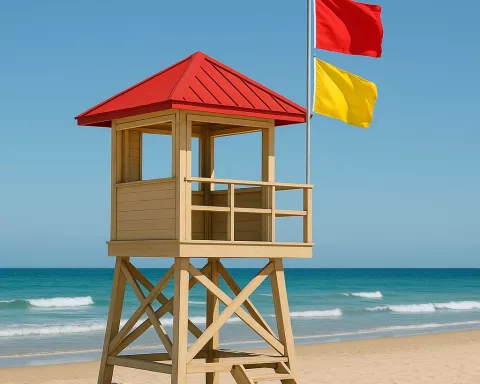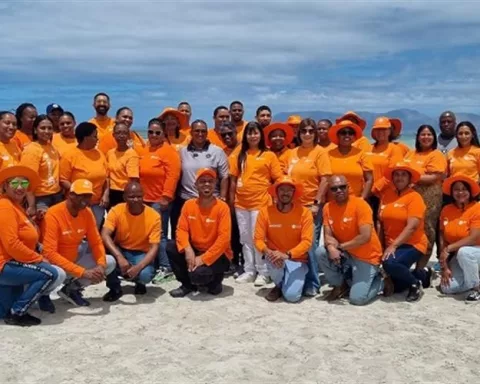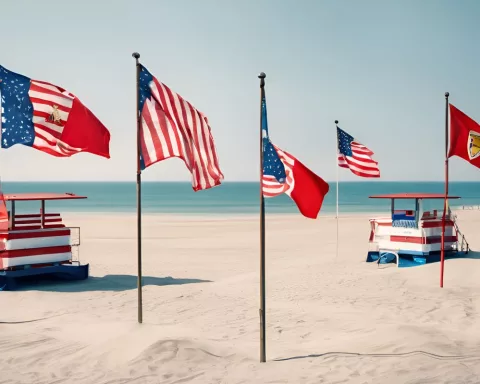Cape Town’s beautiful beaches are mesmerizing under the full moon, but they can also be dangerous. Rip currents and sea swells intensify, posing a significant threat to swimmers. Lifeguards have been responding to incidents and executing rescue missions, but four fatal drownings have occurred outside of prescribed swimming areas and lifeguard hours since December. The city has launched the Identikidz project, tagging children for quick identification at the beach, and remains committed to safety and communal responsibility.
How does the full moon affect beach safety in Cape Town?
Under the full moon, Cape Town experiences an intensification of rip currents and sea swells, which pose a significant threat to both experienced and inexperienced swimmers. The city’s lifeguards have been busier than usual, responding to incidents and executing rescue missions. Adherence to prescribed swimming areas and lifeguard hours is crucial, as four fatal drownings have occurred outside of these parameters since December. The city has launched the Identikidz project, tagging children for quick identification at the beach, and remains committed to safety and communal responsibility.
Lunar Influence on Ocean Dynamics
Under the silvery glow of the full moon, Cape Town’s picturesque coastline transforms into a magnetic display of the ocean’s might. The city’s idyllic shorelines pulsate rhythmically under the moon’s gravitational influence, creating a mesmerizing spectacle of tidal choreography. However, this enchanting dance conceals a latent peril – the intensification of rip currents and sea swells, compelling Cape Town’s Recreation and Parks Department to urgently remind beach visitors of possible dangers.
The full moon’s radiance provokes a distinct change in the ocean’s disposition. Rip currents, aptly termed ‘oceanic rivers,’ surge with heightened energy. When paired with robust sea swells, they constitute a formidable natural force. This powerful amalgamation of maritime elements constitutes a significant threat to both veteran sea explorers and inexperienced swimmers.
The Valiant Lifeguards of Cape Town
The city’s gallant lifeguards, the silent custodians of Cape Town’s immaculate beaches, have lately been busier than usual, irrespective of the volatile weather patterns. Their perseverance and commitment have been rigorously challenged over the past few days, as the wind has been agitating the seas around the peninsula.
Unfortunately, the recent days have not been devoid of incidents. A significant rescue mission was executed at Monwabisi Beach, where three people were extricated from the frightening prospect of drowning. Although these incidents were non-fatal, the individuals were promptly taken to Khayelitsha hospital for comprehensive medical care.
Beach Safety Statistics and Warnings
The city’s data collection reveals a disturbing pattern. Since the start of December, four fatal drownings have occurred. All of these heartbreaking events transpired outside the prescribed swimming areas or beyond the operational hours of the lifeguards. These figures underscore the critical importance of adhering to the guidelines laid down for seaside safety.
Councillor Patricia Van der Ross, the Committee Member for Community Services and Health, voiced her concerns. She appealed to the public to swim only when lifeguards are on duty and within the delineated swimming zones. While the city remains unwavering in its commitment to maintaining safe seaside spaces, public cooperation is crucial for ensuring safety and preserving lives.
Cape Town’s Proactive Measures for Safety
In line with the city’s proactive commitment to safety, the Identikidz project has been launched successfully. This initiative is designed to safeguard children at the beach by tagging them for quick identification and prompt reunion with their guardians if they become separated. Initiated in mid-December, the project has already tagged a remarkable 48,957 children, successfully reuniting 65 of them with their caregivers.
The long Christmas weekend witnessed a surge of activity. Thousands of children were tagged at several beaches including Strand Beach, Muizenberg, and Strandfontein. The other participating beaches reported the following counts:
- Monwabisi: 2,198
- Camp’s Bay: 1,866
- Mnandi: 1,745
- Sea Point: 1,556
- Harmony Park: 1,451
- Gordon’s Bay: 1,396
- Fish Hoek: 1,144
- Milnerton Beach: 813
- Melkbosstrand: 793
- Silwerstroom: 717
- Lagoon Beach: 571
- Big Bay: 476
- Maiden’s Cove: 320
Cape Town’s Ongoing Commitment to Safety
As the lunar cycle dictates the rhythm of the tides, the city remains alert, prepared to protect its residents and visitors from the ocean’s capricious character. This vigilance is a testament to the city’s unwavering commitment to safety, demonstrating that while we may not have power over the sea, we can circumnavigate its challenges through meticulous preparation and communal responsibility.
How many fatal drownings have occurred outside of prescribed swimming areas and lifeguard hours since December in Cape Town?
Four fatal drownings have occurred outside of prescribed swimming areas and lifeguard hours since December in Cape Town, according to the city’s data collection.
What is the Identikidz project and how does it promote safety on Cape Town beaches?
The Identikidz project is designed to safeguard children at the beach by tagging them for quick identification and prompt reunion with their guardians if they become separated. Initiated in mid-December, the project has already tagged a remarkable 48,957 children, successfully reuniting 65 of them with their caregivers.
What is the role of lifeguards in ensuring beach safety in Cape Town?
Cape Town’s lifeguards are responsible for executing rescue missions and responding to incidents at the beach. They play a vital role in ensuring beach safety and are the silent custodians of Cape Town’s immaculate beaches.
What are rip currents and sea swells, and how do they affect beach safety in Cape Town?
Rip currents and sea swells are natural forces that intensify under the full moon in Cape Town, posing a significant threat to both experienced and inexperienced swimmers. When paired together, they can become a formidable danger to anyone in the water.
What precautions should beach visitors take in Cape Town to ensure their safety?
Visitors to Cape Town’s beaches should adhere to the guidelines laid down for seaside safety and only swim when lifeguards are on duty and within the delineated swimming zones. Public cooperation is crucial for ensuring safety and preserving lives.
How committed is Cape Town to maintaining safe seaside spaces, and what measures are being taken to promote safety?
Cape Town is proactive in its commitment to safety and has launched the Identikidz project to tag children for quick identification at the beach. The city remains alert and prepared to protect its residents and visitors from the ocean’s capricious character through meticulous preparation and communal responsibility.












